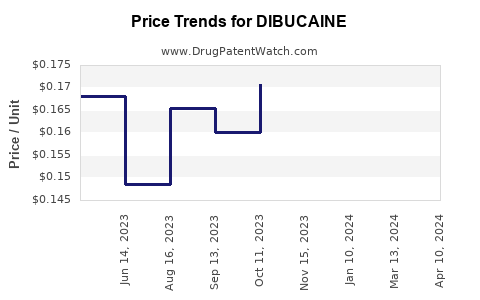Drug Price Trends for DIBUCAINE
✉ Email this page to a colleague

Average Pharmacy Cost for DIBUCAINE
| Drug Name | NDC | Price/Unit ($) | Unit | Date |
|---|---|---|---|---|
| DIBUCAINE 1% OINTMENT | 00536-1211-95 | 0.15179 | GM | 2024-11-20 |
| DIBUCAINE 1% OINTMENT | 00536-1211-95 | 0.14694 | GM | 2024-10-23 |
| DIBUCAINE 1% OINTMENT | 00536-1211-95 | 0.15024 | GM | 2024-09-18 |
| >Drug Name | >NDC | >Price/Unit ($) | >Unit | >Date |


